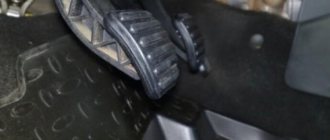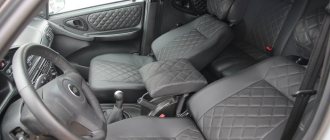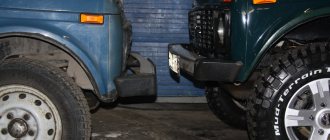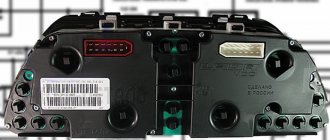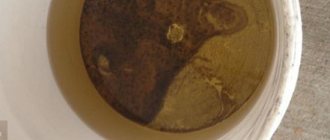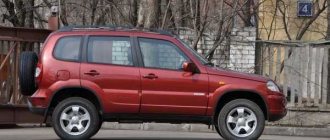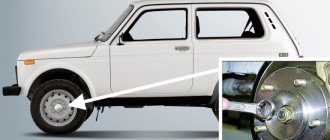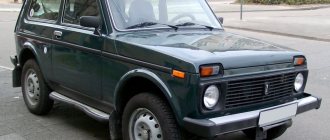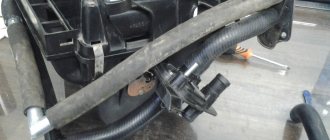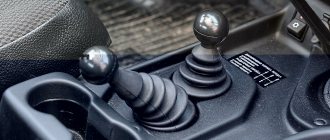The people of Nivovodsk are terrible and merciless in their directness of request on the Internet - Niva antifreeze. Brief, angry and understandable)) I’ll make a small disclaimer, this article is common not only for the Chevrolet Niva and Niva, but also for 90% of the existing vehicle fleet. Of course, some manufacturers have their own special recommendations (Honda perhaps distinguished itself here), but most automakers have the same requirements for antifreeze. And of course, you need to understand that neither AvtoVAZ, nor Mercedes, nor Toyota produce their own coolants. They are made by third party chemical companies. Sometimes these companies are manufacturers of oils, such as Elf-Total or Neste. And sometimes these are pure “chemists”, for example the Basf concern.
Types of coolant
Antifreeze is a liquid that is a mixture of pure distilled water, propylene glycol and various additives. Water is used as a universal solution, and propylene glycol makes the liquid viscous and sticky. Additional additives provide better engine cooling and also perform a number of additional functions depending on the composition:
- silicate additives prevent metal oxidation and also reduce the overall temperature of the liquid;
- carboxylate additives destroy fatty deposits on the walls of the cooling system channels and also increase the shelf life of antifreeze;
antifreeze with special additives on sale , which can perform a number of specific functions - they prevent the liquid from freezing at subzero temperatures (relevant for cold regions), eliminate scale and foam (relevant for old problematic engines), and so on.
What to do if liquid leaks? What kind of breakdowns happen?
Often problems in the cooling system are caused by breakdowns and leaks. And the condition of the antifreeze does not play any role here. Here is a list of possible malfunctions and how to fix them:
- Thermostat failure. This part is responsible for the connection between the external and internal circuits of the cooling system. In normal condition, it remains cold at operating temperatures below 80-85 degrees. If the liquid heats up more, the thermostat becomes hot. If there is a malfunction, the thermostat no longer heats up, or is constantly hot. And then it has to be changed. It is worth remembering that this part cannot be repaired, only replaced.
- Pump breakdowns. Possible problems: broken impeller blades, cracks in the housing, failure of seals. In case of leaks, it is worth checking whether the problem is in the pump or in the hoses.
- Problems with the cylinder block. If cracks appear or there is a manufacturing defect, you will have to turn to professionals. But sometimes problems arise due to a rotten block cover gasket. This is usually due to the use of ordinary water in the cooling system. Diagnosis is simple: dense, white or bluish smoke constantly comes out of the exhaust pipe. Here the cylinder block gasket is replaced.
- Development of the service life of system hoses. The solution is simple - replacing the hoses. It is done by hand. Tools: pliers and a screwdriver for removing clamps. Old hoses are removed and thrown away, new ones are installed in their place.
- Problems with the expansion tank. Cracks appear on it, and the container has to be replaced. The procedure is simple: the screws on the tank fastenings are unscrewed, the old container is removed, and a new one is installed.
- Problem with radiator fans. There are two of them. One or both can fail at once. Repairs can only be made by an experienced electrician.
- Radiator leaks. Corrected by repair or replacement of the part. But you won’t be able to fix this on your own; you need the help of a professional.
The system should be checked for malfunctions before replacing the fluid. After all, when repairing the cooling system, all the antifreeze is drained. Therefore, it is worth filling in a new one after the repair.
Recommendations for choosing for Chevy Niva
To determine which antifreeze is best to pour into your Chevrolet Niva, you need to know which one was filled from the factory, since each model has a lot of specific nuances. However, in most cases, the choice of coolant depends on the year of manufacture of the car:
- for older models that were produced before 2001-2002, class G12 fluid is suitable;
- for later models (from 2003 to 2010), G12+ antifreeze is suitable;
- for modern models (manufactured after 2010), it is recommended to purchase coolant category G12++.
Also, many people use the domestic mixture Antifreeze class TS-40 as antifreeze. Motorists often speak negatively about Antifreeze, but in its properties this liquid is practically no different from foreign antifreezes. To understand the absurdity of negative reviews, you need to remember that most Chevrolet Niva cars are filled with antifreeze at the factory.
The only major drawback of antifreeze is its shorter service life in comparison with G12 mixtures - in this the domestic cooler is really inferior to its foreign analogues. The recommended replacement frequency is 30 thousand km, and for some antifreezes the interval between replacements can be up to 200 thousand km.
To find out more information, watch the video in which an expert answers the question of what is better - antifreeze or antifreeze:
Replacing and topping up coolant
Reg.: 03/21/2009 Messages: 13 From: St. Petersburg Age: 66 Car: Niva 21213 96
Name: Nikolay Lugovoy Reg.: 10/26/2012 Messages: 149 From: Arkhangelsk Age: 75 Car: 21214M 2010. Multitronics TC 750
Reg.: 03/21/2009 Messages: 13 From: St. Petersburg Age: 66 Car: Niva 21213 96
Reg.: 10.27.2011 Topics / Messages: 27 / 2514 From: Moscow, Sokol district Age: 53 Car: NADEZHDA 2120-41 2001, 1.8; JAC Rein
A screw driven in with a hammer holds better than a nail tightened with a screwdriver.
Reg.: 08/25/2009 Messages: 738 From: Russia Crimea Yalta Age: 61 Car: NIVA 2121 1987
Reg.: 12/06/2004 Threads / Messages: 4024 / 23169 From: Moscow Age: 68 Car: 21214M, 2013
Alexey aka ALER.
Reg.: 12/06/2004 Threads / Messages: 627 / 51709
Reg.: 12/06/2004 Threads / Messages: 4024 / 23169 From: Moscow Age: 68 Car: 21214M, 2013
What they told you was obvious nonsense. There is no need to repeat it. If you pour Niagara Red, you can't go wrong. But since (https://www.autodela.ru/main/top/test/niagara_all) this is G12+ antifreeze, fill in any G12+, no matter who made it and no matter what color it was painted. Here is a completely red antifreeze that is not suitable for you:
At the top of the label it says G-11 in white and red.
Alexey aka ALER.
Replacement procedure
After choosing the type of coolant, we will consider how to change antifreeze in a Chevrolet Niva.
Required Tools
First you need to find an inspection ditch or lift to access the car from below.
Now you need to prepare the following tools:
- wrench 10;
- pliers;
- flat screwdriver;
- funnel for filling a new cooler;
- container for draining old fluid (volume of at least 8 liters);
- distilled water (if required).
Next, let's look at how to drain antifreeze with your own hands:
- Turn off the engine and wait until the system cools down completely.
- Open the hood, find the expansion tank and remove the cap from it. The lid should be unscrewed gradually, as hot air may accumulate under it.
- Find the drain hole and place a container over it.
- Remove the drain plug and wait a while for the old fluid to drain out of the tank.
For a more visual representation of the process, we recommend watching the video:
Filling with new coolant
Now let's study the instructions on how to fill:
1. Carefully read the instructions for the cooler - the fact is that in some cases antifreeze is sold as a concentrate, so sometimes it needs to be diluted with distilled water according to the instructions (usually a ratio of 1 to 1 or 2 to 3 is used).
2. Insert a funnel into the hole and pour antifreeze into the system (pay attention that the liquid should not exceed the MAX mark).
3. While filling, periodically press the radiator tube - this will avoid the appearance of air locks in the system.
4. Close the tank and start the engine.
5. Turn on the interior heater fan and pay attention to the air temperature - if the air is very cold, then a plug has formed in the system. To eliminate this defect, remove the cap on the radiator and run the engine for 5-10 minutes, then turn off the engine and close the cap.
6. Get into the car and drive 10-20 kilometers, and then check the coolant level and, if necessary, add antifreeze to the maximum according to the standard algorithm (sometimes after refueling, some of the antifreeze evaporates for natural reasons).
What kind of transmission oil should I put in the Niva?
Owners of domestic VAZ 2121 and 2131 cars should know what gear oil to fill and how to do it correctly with their own hands in a garage? This requires a suitable lubricant and a certain set of tools, and we will talk about this in detail in today's material.
The physical and mechanical properties of various Niva gearbox oils affect their performance properties. Not every car owner understands the intricacies, and determines the oil only by the range of use of a particular product. Experts recommend following a number of criteria when choosing gear oil for Niva:
- the oil must be suitable taking into account the current condition of the gearbox;
- the product must meet the requirements of the car manufacturer;
- suitable for the season of operation of the car;
- gear oil for VAZ 21214 or 21213 must be real.
Another important rule should be mentioned: never choose oil based on the principle that the more expensive the better. Often it turns out to be completely wrong.
Manufacturer's requirements
The car manufacturer, taking into account the design features of a particular transmission, puts forward requirements that the oil used by car owners must satisfy. These requirements are always indicated in the service book. On the packaging of any oil, in addition to the product name, there is always a marking with the following information:
- viscosity grade;
- operational group.
Replacement frequency
The cooler on a Chevrolet Niva should be replaced according to factory standards. On average, you need to replace it every 40-60 thousand kilometers, depending on the model. In some cases, you need to fill the coolant more often, for example, if the engine life is approaching a major overhaul, or the antifreeze has turned brown or black.
Important: If you use your car very rarely, you should fill it with antifreeze at least once every 3-4 years.
A drop of history
I’ll try to very briefly outline the situation, what happens in general and what specifically applies to our cars. What is antifreeze and what is ANTIFREEZE. When the Italians came to the USSR to adapt cars and engines for the 2101, they didn’t like a lot of things. In particular, the quality of gasoline and coolants. Then Soviet chemists developed TOSOL. I decipher it - Technology of Organic Synthesis of OL (designation of alcohols, according to some state standards). So, TOSOL is one of the cheap antifreezes.
Replacing antifreeze on Niva 21214
Replacement of antifreeze on Niva 21214 cars, according to the manufacturer’s recommendation, should be done every 3 years, or after 60,000 mileage. When operating in difficult conditions, it is advisable to carry out work more often - every 30-40 thousand kilometers.
What antifreeze and how much should I fill in Niva-21214?
When choosing coolant for Niva 21214, you should rely on the manufacturer’s recommendations. Based on application practice, the following types of antifreeze can be used:
- For cars produced in 2009, red coolant G12+ is suitable. The optimal options are Zerex G, VAG, Frostschutzmittel A, and FEBI.
- For Niva 21214 cars produced after 2010, it is worth using red G12++ class antifreeze. The most popular manufacturers here are Castrol Radicool Si, MOTUL, Freecor QR, Freecor QR, FEBI and others.
Other coolants also performed well - Sintek, Cool Stream (Premium and Standard), as well as TC Felix Antifreeze.
Antifreeze should be replaced not only during the periods indicated above, but also if a reddish tint appears. This indicates a deterioration in the composition of the coolant or the presence of a counterfeit in the cooling system.
The optimal volume of antifreeze required to refill the system is 10.7 liters.
Replacement process
Work is carried out only on a cooled engine and on a level area (pit, overpass). If a horizontal section cannot be found, a slight lifting of the front of the car is allowed.
Before draining the antifreeze, remove the negative terminal from the battery, and also remove the protection from the motor (if installed). Afterwards, prepare the necessary tools. To replace antifreeze on a Niva 21214 car, you will need “fifteen” keys, a “thirteen” socket with a knob and an extension, as well as a ratchet handle (it will be more convenient with it). Also buy new antifreeze to fill the system, find a container larger than 11 liters, as well as a dry rag.
Next, do the following:
- Head into the salon and open the heater tap.
- In the engine compartment, find the expansion tank and unscrew the plug from it.
- Unscrew the radiator cap. At the initial stage, this may not be done. If you leave the cap in place, the coolant will come out with less activity, which eliminates splashing.
- Place a container with a volume of 11 liters or more under the approximate location for draining. At the same stage, prepare a tube having an internal diameter of 1.6 cm.
Let's look at how to drain antifreeze from a radiator. To do this, remove the cover, which is located on the left, at the bottom of the device, connect the prepared tube to it and wait until the coolant leaves the system. The presence of a tube is necessary to avoid splashing of dangerous liquid.
Proceed to the next step - drain the old antifreeze from the cylinder block (hereinafter - BC) of the Niva-21214 engine. To do this, do the following:
- take a key set to “thirteen” (preferably with a socket and an extension), then unscrew the plug installed on the lower left side of the engine BC;
- drain the coolant from the system using the same hose as for the radiator.
Drain the antifreeze from the expansion tank. For this:
- remove its fastening, open the plug and raise the container above the level of the radiator filler outlet; these actions are enough for the remaining antifreeze to come out of the tank;
- Now tighten the drain plugs, place and secure the expansion tank in its original place.
When replacing antifreeze, please note that the connection for the BC plug uses a conical thread. Its peculiarity is that there is no need for compaction. The plug on the Niva-21214 cylinder block is pulled with a force of 25-30 N*m using a torque wrench.
Filling with new antifreeze
Go through the final stage of replacing antifreeze - fill in the prepared coolant. For this:
- Pour antifreeze into the radiator hole. Make sure that the upper coolant level reaches the top edge of the filler hole.
- Pour coolant into the expansion tank. The level should be 30 mm above the MIN sign.
- Start the engine and let it warm up. The cap on the radiator must be closed. Pay attention to the hose leading to the radiator from the engine. It will be cold for a while, but after a few minutes it will warm up. This confirms the fact that the liquid went in a large circle.
- Wait until the fan starts and turn off the engine.
Wait for the coolant to cool, check the level again and top up (if required). At this point, the replacement of antifreeze is completed. If necessary, expel air pockets from the system, for which, let the engine run with the radiator cap removed (the front of the car should be higher than the rear).
Now you know how to drain the antifreeze in a Niva 21214 car, and then fill the system with new coolant. This information is enough to do all the work yourself and not contact specialists.
Problem
Every second letter contains a question and a request: explain why I do not recommend a domestic product. After all, unlike oils, Niva antifreeze is a fairly simple thing. There are two reasons.
- At one time it was customary to criticize GOST standards. Now we will break everything, there will be competition and it will be good. It turned out to be bad)) The only regulatory act that exists today is GOST 28084–89, which was adopted during the Soviet era. And even today it is quite outdated, even for the domestic automobile industry. But in our country we have such magical standards, which are called TU (technical conditions). And for each area they are different. That is, the military has its own specifications for tank coolant. And the Ministry of Agriculture has its own specifications - for the ZIL-130 car. Can you imagine what a riot this is for imagination?? And most importantly, the manufacturer does not deceive you)))
- I am a bad chemist, to be more honest - very bad, and to be completely honest - then none at all)) Therefore, this paragraph was written under the dictation of a professor at the St. Petersburg Institute of Technology)) Ethylene glycol is a fairly expensive product, so our Papuans replace it with cheap bodyagi, consisting of glycerol and methanol. And if the first component is very harmful to the cooling system, then the second is simply incompatible with human health. And the methyl compound with water at temperatures above 50-60 degrees begins to “gnaw” aluminum. In chemistry, this term is called “etching.” And one more funny moment. Methanol evaporates when heated, the client adds water. So the process is repeated several times. As a result, the system simply produces colored water, which will freeze at the first frost.
Motor oils
| Oil brand | SAE viscosity grade | Group | Manufacturer | Regulatory document | |
| AAI | AP1 | ||||
| LUKOIL LUX | 5W-30, 5W-40 10W-40,15W-40 | B5/D3 | SJ/CF | LLC "Lukoil-Permnefteorg-sintez", Perm | STO 00044434-003 |
| LUKOIL LUX | 0W-40, 5W-20, 5W-30, 5W-50, 10W-30 | B5/D3 | SL/CF | LLC "Lukoil-Permnefteorg-sintez", Perm | STO 00044434-003 |
| TNK SUPER | 5W-30, 5W-40 10W-40 | B5/D3 | SJ/SL/CF | TNK Lubricants LLC, Ryazan | TU 0253-008-44918199 |
| TNK MAGNUM | 5W-30, 5W-40 10W-40,15W-40 | B5/D3 | SJ/SL/CF | TNK Lubricants LLC, Ryazan | TU 0253-025-44918199 |
| ROSNEFT MAXIMUM | 5W-40, 10W-40 | B5/D3 | SL/CF | OJSC "Novokuibyshevsk Oil and Additives Plant", Novokuibyshevsk | TU 0253-063-48120848 |
| ROSNEFT OPTIMUM | 10W-30, 10W-40 15W-40 | B5/D3 | SJ/CF | OJSC "Novokuibyshevsk Oil and Additives Plant", Novokuibyshevsk | TU 0253-062-48120848 |
| ROSNEFT MAXIMUM | 5W-40, 10W-40 | B5/D3 | SL/CF | OJSC "Angarsk Petrochemical Company", Angarsk | TU 0253-391-05742746 |
| ROSNEFT OPTIMUM | 10W-30, 10W-40 15W-40 | B5/D3 | SJ/CF | OJSC "Angarsk Petrochemical Company", Angarsk | TU 0253-389-05742746 |
| ROSNEFT PREMIUM | 0W-40, 5W-40 5W-40 | B5/D3 | SJ/CF SL/CF SM/CF | OJSC "Angarsk Petrochemical Company", Angarsk | TU 0253-390-05742746 |
Continuation of the table. 2
| Oil brand | SAE viscosity grade | Group | Manufacturer | Regulatory document | |
| AAI | API | ||||
| EXTRA 1 EXTRA 5 EXTRA 7 | 5W-30 15W-40 20W-50 | B5/D3 | SJ/CF | OJSC "Omsk Oil Refinery", Omsk | TU 38.301-19-137 |
| EXTRA | 5W-30, 10W-40, 15W-40 | B5/D3 | SL/CF | OJSC "Omsk Oil Refinery", Omsk | TU 38.301-19-137 |
| ESSO ULTRA | 10W-40 | B5/D3 | SJ/SL/CF | Exxon-Mobil, Germany | |
| GTTURBO SM | 10W-40 | B5 | S.M. | Hanval INC, Korea | |
| LIQUI MOLY OPTIMAL | 10W-40 | B5/D3 | SL/CF | Liqui Moly GmbH, Germany | |
| MOBIL 1 MOBIL SYNT S MOBIL SUPER S | 0W-40, 5W-50 5W-40 10W-40 | B5/D3 | SJ/SL SM/CF SJ/SL/CF | Exxon-Mobil, Germany | |
| MOBIL 1 ESP FORMULA | 5W-30 | B6/D3 | SJ/SL SM/CF | ||
| RAVENOL HPS RAVENOL VSI RAVENOL LLO RAVENOL TSI RAVENOL Turbo-C HD-C | 5W-30 5W-40 10W-40 10W-40 15W-40 | B5/D3 | SL/CF SL/CF SL/CF SL/CF SJ/CF | Ravensberger Schmirstoffvertrieb GmbH, Germany | |
| SHELL HELIX: PLUS PLUS EXTRA ULTRA | 10W-40 5W-40 5W-40 | B5/D3 | SL/CF | SHELL EAST EUROPE Co, UK, Finland | |
| ZIC A PLUS | 5W-30, 10W-30, 10W-40 | B5 | SL | SK CORPORATION, Korea | |
Note. The oil change period is in accordance with the vehicle service book.
RECOMMENDED TEMPERATURE RANGES FOR APPLICATION OF MOTOR OILS
| Minimum engine cold start temperature, 0C | Viscosity grade according to SAE J 300 | Maximum ambient temperature, 0C |
| below -35 | 0W-30 | 25 |
| below -35 | 0W-40 | 30 |
| -30 | 5W-30 | 25 |
| -30 | 5W-40 | 35 |
| -25 | 10W-30 | 25 |
| -25 | 10W-40 | 35 |
| -20 | 15W-40 | 45 |
| -15 | 20W-40 | 45 |
What coolant is recommended for the Niva Chevrolet car
In general, both G12 type antifreeze and antifreeze are suitable for the car .
Many car owners mistakenly claim that antifreeze is a cheap and lower quality version of antifreeze.
Modern antifreeze manufacturing technologies make it possible to compete not only with domestic, but also with foreign coolant manufacturers. The only significant difference is the shorter service life of antifreeze compared to antifreeze.
In the Chevrolet Niva, coolant replacement is done as a standard - once every 2 years, or every 60 thousand km . Another factor indicating the need to change the coolant is a change in its color. It acquires a reddish tint, which indicates a change in chemical properties.
On cars with air conditioning, it is better to use G12 antifreeze . Usually the plant fills it with TOSOL TS-40 (manufacturer: Dzerzhinsk). Mixing different types of coolant is prohibited. An exception for topping up is FelixProLonger liquid (from the same manufacturer).
Video about comparing the properties of antifreeze and antifreeze
Flushing fluids for the engine lubrication system
Liquid brand
Manufacturer
Regulatory document
OJSC Lukoil-Nizhegorodnefteorgsintez, Kstovo, LLC Lukoil-Permnefteorgsintez, Perm
OJSC Novo-Ufa Oil Refinery, Ufa
OAO Angarsk Petrochemical Company, Angarsk
MP SYNTHETIC MP CLASSIC
OJSC "Omsk Oil Refinery", Omsk
Note. Flushing fluids are used during maintenance in accordance with the service book when replacing the working engine oil with fresh one.
Video instruction
In conclusion, for clarity, watch the video in which an expert demonstrates the process of replacing the coolant:
Prudent car owners ensure that their car runs smoothly. All systems must be normal: power, ignition, cooling and lubrication. During operation, a large amount of heat is released from the motor. To prevent it from overheating, it is necessary to maintain the recommended temperature. This function is performed by a special coolant (coolant).
